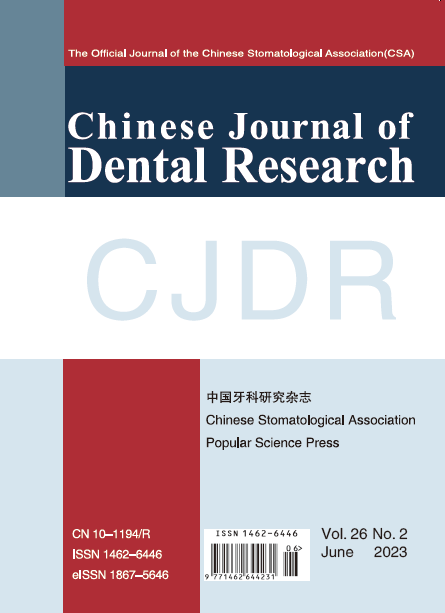|
Objective: To investigate the synergistic changes of the astrocytes and neurons in the sensorimotor cortex during the process of implant osseointegration after insertion. Methods: A total of 75 rats were allocated into three groups (n = 25): non-operated, extraction and implant. The rats in the latter two groups underwent extraction surgery of three maxillary right molars. One month later, the implant group received one titanium implant in the healed extraction socket. The rats were sacrificed on days 1, 3, 7, 14 and 28 after implantation. The brain sections, including sensory centre S1 and motor centre M1, were selected for further immunofluorescence for measurement of the synergistic morphological and quantitative changes of astrocytes and neurons. Results: In layer IV of S1, the number of astrocytes in the implant group showed a descending trend with time; on days 1, 3, 7 and 14, the number of astrocytes in both the extraction group and the implant group was significantly higher than that in the non-operated group, and there was no difference between the extraction group and the implant group; however, on day 28, the number of astrocytes in the implant group was significantly lower than that in the extraction group. In layer V of M1, on days 7, 14 and 28, the number of astrocytes in the implant group was significantly lower than that in the extraction group; on days 14 and 28, the number of astrocytes in the extraction group was significantly higher than that in the non-operated group. In layer IV of S1 or layer V of M1, the number of neurons showed no significant changes between the three groups. Conclusion: The astrocytes in the face sensorimotor cortex were activated as a reaction to oral environment changes. This kind of neuroplasticity can be reversed by oral rehabilitation with dental implants. The motor cortex may be intimately related to osseointegration and osseoperception. Key words: motor cortex, neuroplasticity, oral implant, osseointegration, sensory cortex |
- Chin J Dent Res
CN 10-1194/R . ISSN 1462-6446 . eISSN 1867-5646 . Quarterly 



